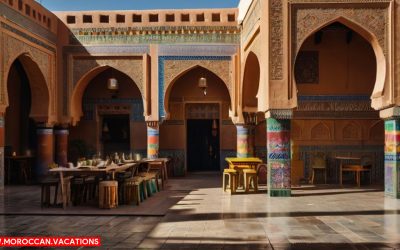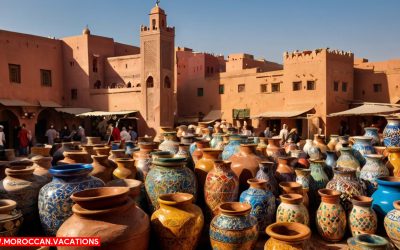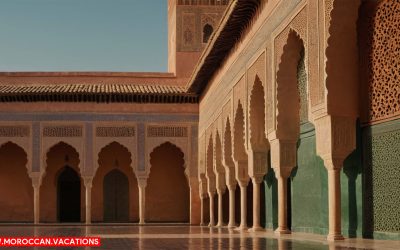Historical Background of Andalusian Architecture
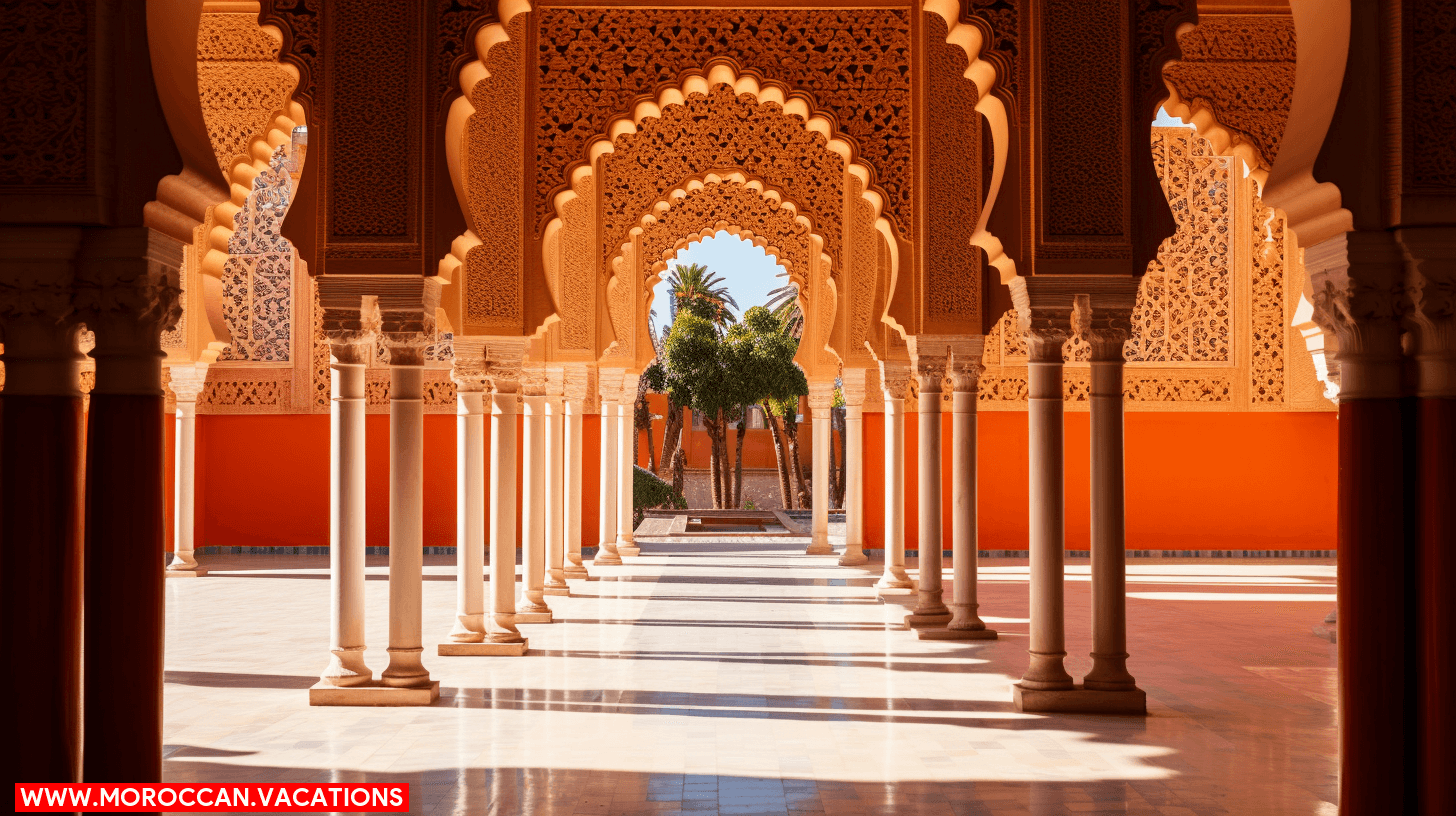

You step into the enchanting city of Marrakesh and are immediately captivated by its unique architectural beauty. But what you may not realize is that this captivating design has been heavily influenced by the Andalusian architecture of centuries past. From the intricate details of the palaces to the tranquil riads and majestic mosques, the influence of Andalusian design can be seen throughout the city. Join us as we explore the fascinating history and contemporary interpretations of this remarkable architectural style in Marrakesh’s design
The historical background of Andalusian architecture is essential to understanding its influence on Marrakesh’s design. Andalusian architecture traces its historical origins back to the Islamic period in the Iberian Peninsula, particularly during the reign of the Umayyad dynasty in Al-Andalus. This architectural style flourished from the 8th to the 15th centuries and left a lasting impact on the region’s cultural significance.
Andalusian architecture is characterized by its unique blend of Islamic and European elements. The architectural style reflects the multicultural nature of Al-Andalus, with influences from the Romans, Visigoths, and Moors. The use of intricate geometric patterns, decorative tilework, and horseshoe arches are distinctive features of Andalusian architecture.
Marrakesh, being a city with a rich cultural heritage, drew inspiration from Andalusian architecture in its design. The historical connections between Al-Andalus and Morocco created a strong link between the two regions. The incorporation of Andalusian architectural elements in Marrakesh’s buildings, such as the Bahia Palace and Koutoubia Mosque, is a testament to this influence.
Understanding the historical origins and cultural significance of Andalusian architecture allows us to appreciate Marrakesh’s design as a reflection of this rich heritage. The fusion of different architectural styles in Marrakesh creates a sense of freedom and openness, inviting visitors to explore and experience the vibrant culture of the city.
Key Elements of Andalusian Architecture
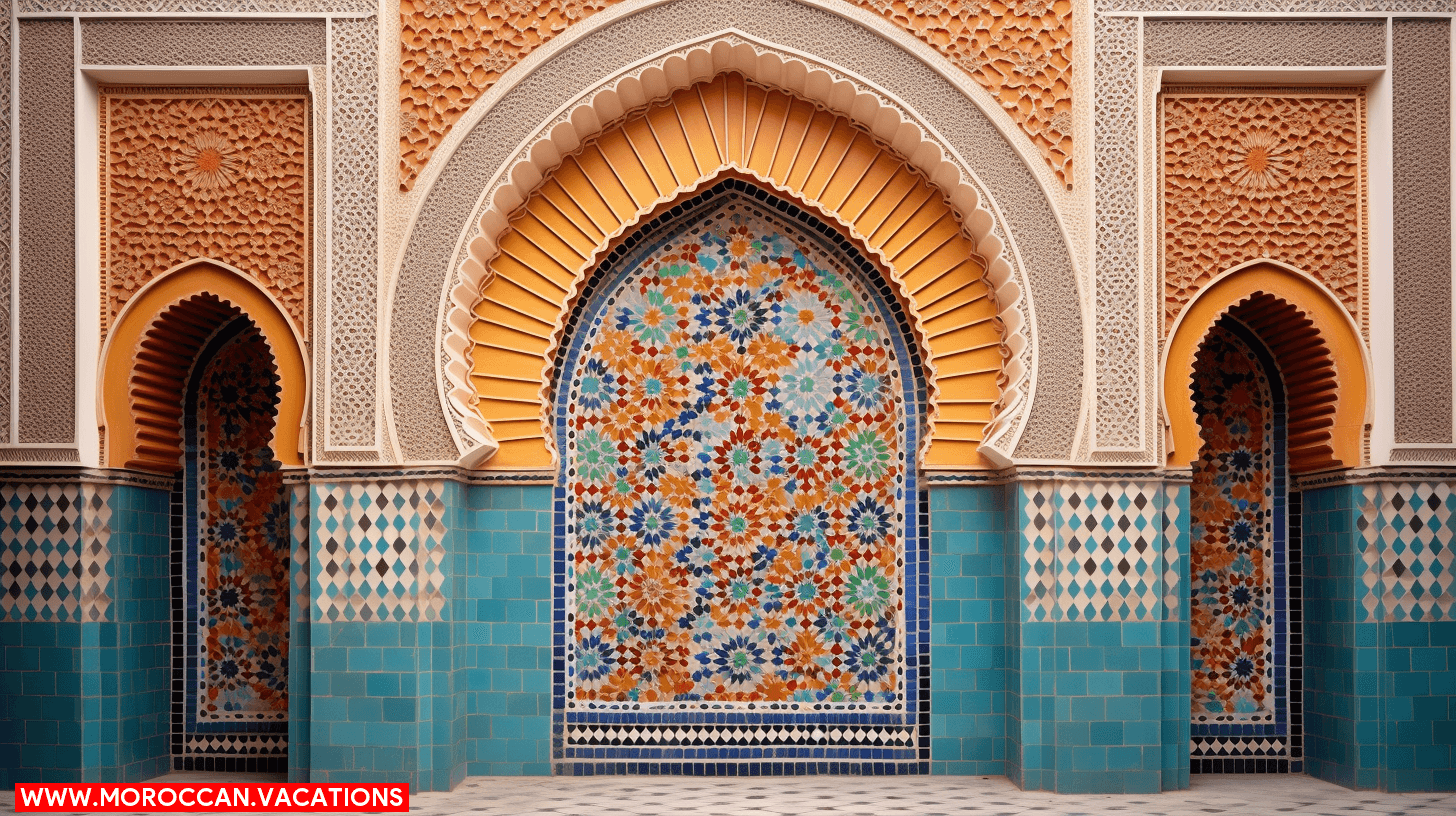

To delve deeper into the influence of Andalusian architecture on Marrakesh’s design, let’s explore the key elements that define this unique architectural style. Andalusian architecture, originating from the southern region of Spain, left a lasting impact on the urban planning and decorative motifs of Marrakesh.
One of the key elements of Andalusian architecture is the concept of an open courtyard, known as a “patio” in Spanish or “sahn” in Arabic. These courtyards serve as central gathering spaces, providing natural light, ventilation, and a sense of serenity. In Marrakesh, this influence can be seen in the traditional riads, which are private residences centered around a beautiful courtyard.
Another important feature is the use of intricate geometric patterns and decorative motifs. These can be found in the elaborate tile work, known as zellige, that adorns the walls, floors, and ceilings of Andalusian architecture. Marrakesh, with its stunning examples of zellige in the historic sites like the Bahia Palace and the Ben Youssef Madrasa, showcases the enduring influence of this decorative style.
Lastly, the incorporation of arches is a defining characteristic of Andalusian architecture. The horseshoe arch, in particular, is a prominent feature, adding elegance and architectural harmony to the design. Marrakesh’s architectural landscape is dotted with arches, seen in the entrances of buildings, the arcades of the souks, and even in the iconic Koutoubia Mosque.
Andalusian Influence on Marrakesh’s Palace Architecture
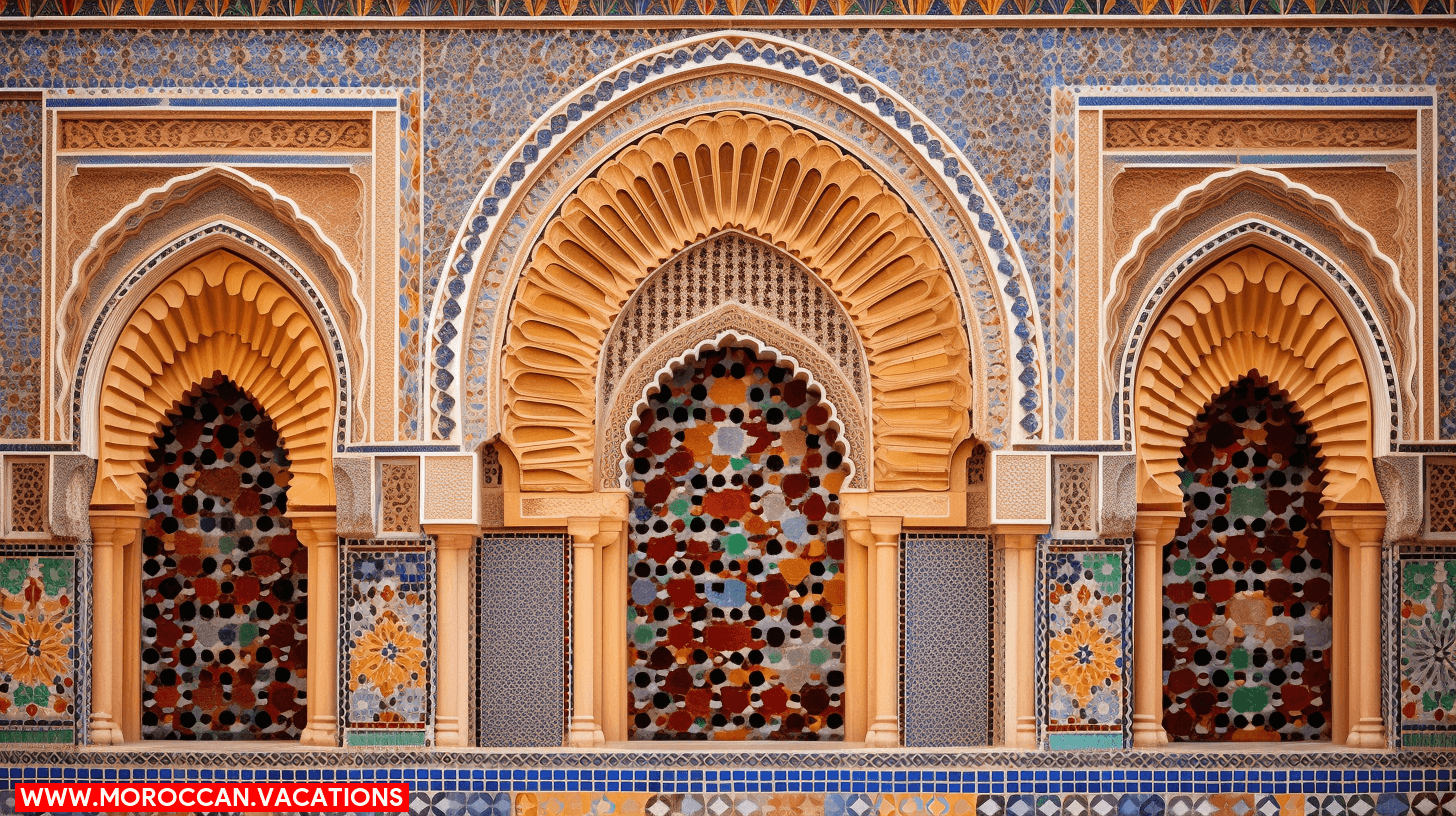

Explore the rich influence of Andalusian architecture on Marrakesh’s palace architecture with a deep appreciation for its intricate details and grandeur. The Andalusian influence on Marrakesh’s palace architecture is evident in its gardens and courtyards, adding a touch of elegance and tranquility to these magnificent structures.
- Andalusian Influence on Marrakesh’s Gardens: The Andalusian architectural style is characterized by its harmonious integration of nature and architecture. Marrakesh’s palaces showcase this influence through their stunning gardens. These gardens are meticulously designed, featuring lush greenery, vibrant flowers, and serene water features. They provide a peaceful escape from the bustling city, allowing visitors to reconnect with nature and find solace in its beauty.
- Andalusian Influence on Marrakesh’s Courtyards: The courtyards of Marrakesh’s palaces bear the mark of Andalusian influence in their design. They are typically adorned with intricate tilework, ornate fountains, and elegant arches. These elements create a sense of grandeur and opulence, while also offering a cool and shaded space for relaxation. The courtyards serve as the heart of the palaces, providing a central gathering point for socializing and enjoying the beauty of the surroundings.
- Integration of Andalusian and Moroccan Architecture: Marrakesh’s palace architecture seamlessly blends Andalusian and Moroccan design elements. The Andalusian influence can be seen in the use of geometric patterns, intricate carvings, and colorful tilework. These details are combined with traditional Moroccan elements such as the use of local materials like plaster and tadelakt, as well as the incorporation of traditional Moroccan motifs. The result is a unique architectural style that embodies the rich history and cultural heritage of both Andalusia and Morocco.
- Legacy of Andalusian Influence: The Andalusian influence on Marrakesh’s palace architecture has left a lasting impact on the city’s cultural identity. It is a testament to the historical connections between Andalusia and Morocco, and serves as a reminder of the rich architectural heritage that spans across borders. The palaces of Marrakesh continue to inspire awe and admiration, drawing visitors from around the world to experience the beauty and grandeur of Andalusian-inspired design.
Andalusian Influence on Marrakesh’s Riads
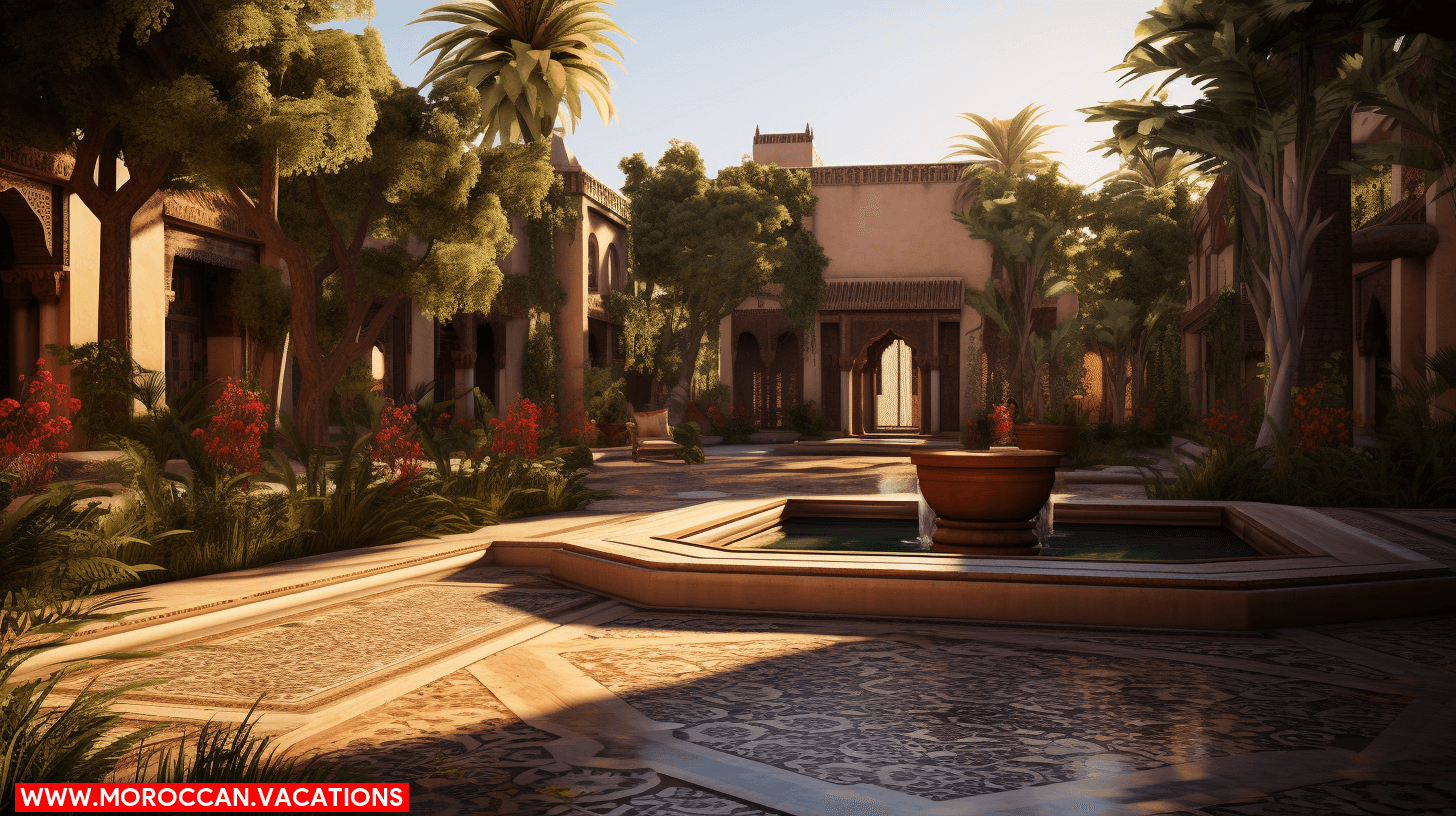

As you delve further into the influence of Andalusian architecture in Marrakesh’s design, you’ll discover the captivating impact it has had on the city’s riads. The Andalusian influence can be seen not only in the grand palaces and mosques of Marrakesh but also in its traditional houses, known as riads. These riads are characterized by their central courtyards, lush gardens, and intricate tilework, all of which bear a striking resemblance to the architectural style of Andalusia.
The Andalusian influence on Marrakesh’s gardens is evident in the way they are designed and laid out. Just as in Andalusia, the riads in Marrakesh often feature beautifully manicured gardens with fountains, citrus trees, and fragrant flowers. These gardens serve as peaceful retreats from the bustling city, providing a serene and tranquil atmosphere for residents and guests to enjoy.
In addition to the gardens, the Andalusian influence can also be seen in the architecture of Marrakesh’s traditional houses. The riads typically have a symmetrical layout, with rooms arranged around the central courtyard. The use of intricate tilework, arches, and geometric patterns in the design of these houses is reminiscent of the Andalusian style.
Andalusian Influence on Marrakesh’s Mosques
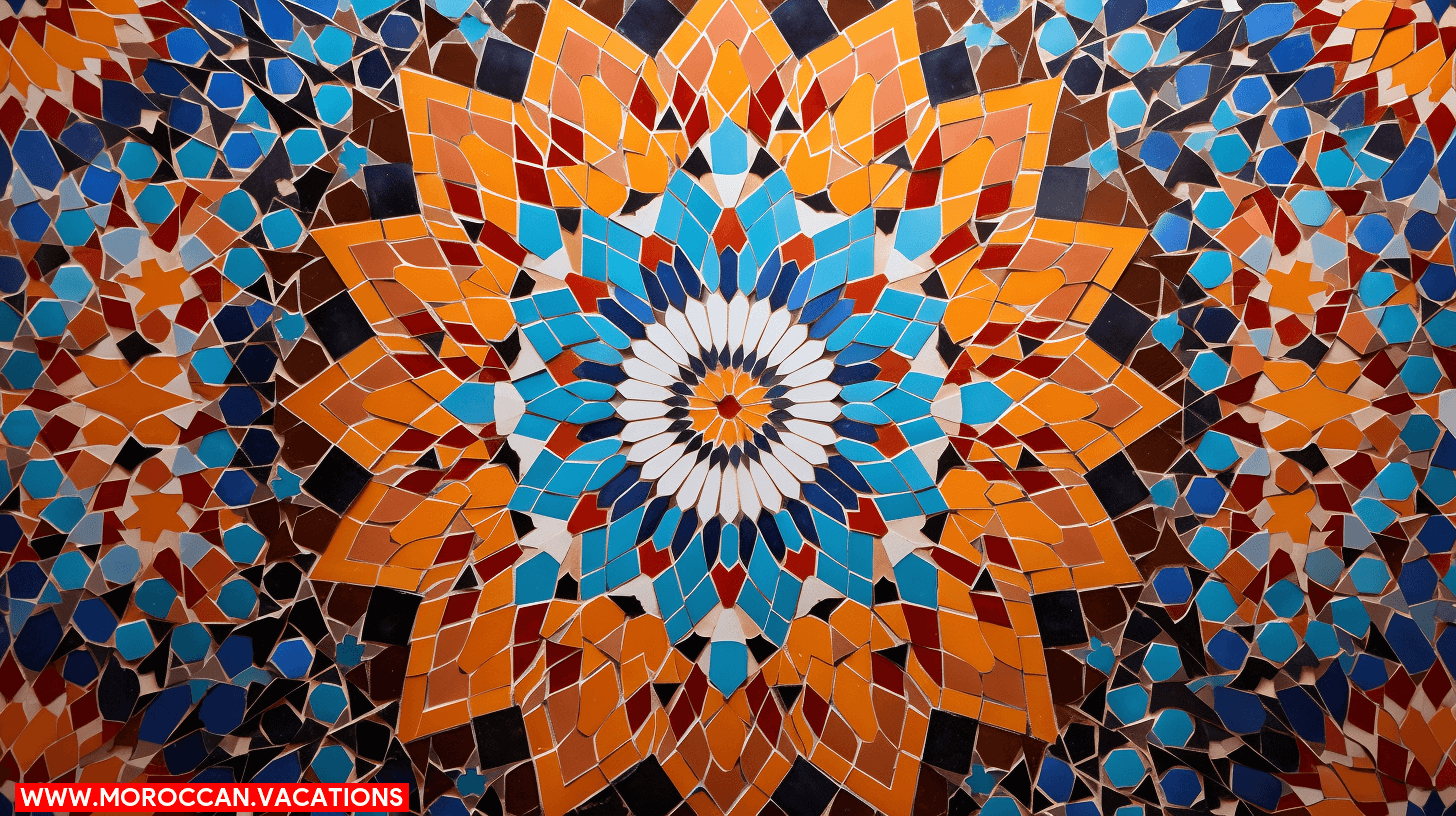

The Andalusian influence on Marrakesh’s design extends to its mosques, which showcase the intricate architectural style and cultural heritage of both Andalusia and Morocco. Here are four ways in which Andalusian influence can be seen in Marrakesh’s mosque designs:
- Geometric Patterns: Andalusian architecture is known for its intricate geometric patterns, and these motifs can be found in the mosques of Marrakesh. The mosques often feature beautiful tilework, carved plaster, and intricately designed arches, all inspired by the geometric patterns of Andalusian mosques.
- Courtyard Layout: Many of Marrakesh’s mosques have a central courtyard, a design element influenced by Andalusian architecture. This layout provides a peaceful and open space for worshippers to gather, and it also allows for natural ventilation and light to enter the mosque.
- Arches and Columns: Andalusian architecture is characterized by its elegant arches and columns, and these elements can be seen in Marrakesh’s mosques as well. The arches and columns not only provide structural support but also add a sense of grandeur and beauty to the mosque’s design.
- Cultural Integration: The Andalusian influence on Marrakesh’s mosques goes beyond just architectural elements. It also represents a cultural integration between Andalusia and Morocco. The mosques serve as a reminder of the historical connections between these two regions and the shared heritage of the Islamic faith.
Andalusian Influence on Marrakesh’s Public Spaces
Andalusian influence can be seen in Marrakesh’s public spaces through their vibrant colors, bustling markets, and lively street performances. Marrakesh, known as the “Red City,” is a vibrant and bustling destination that embraces its Andalusian heritage in its public spaces. The city’s vibrant colors, reminiscent of the vibrant hues found in Andalusian architecture, create a lively and welcoming atmosphere. From the red walls of the Medina to the blue and green tiles adorning the buildings, Marrakesh’s public spaces are a visual feast for the eyes.
The bustling markets, or souks, are another example of Andalusian influence in Marrakesh’s public spaces. These markets, filled with a myriad of goods and bustling activity, are reminiscent of the vibrant marketplaces found in Andalusia. From textiles and spices to ceramics and leather goods, the souks offer a wide array of products, just like the markets in Andalusia.
In addition to the vibrant colors and bustling markets, Marrakesh’s public spaces also come alive with lively street performances. Musicians, dancers, and acrobats entertain locals and tourists alike, adding to the vibrant atmosphere of the city. These performances, often accompanied by traditional Andalusian music and dance, showcase the rich cultural heritage of Marrakesh and its connection to Andalusia.
Contemporary Interpretations of Andalusian Architecture in Marrakesh
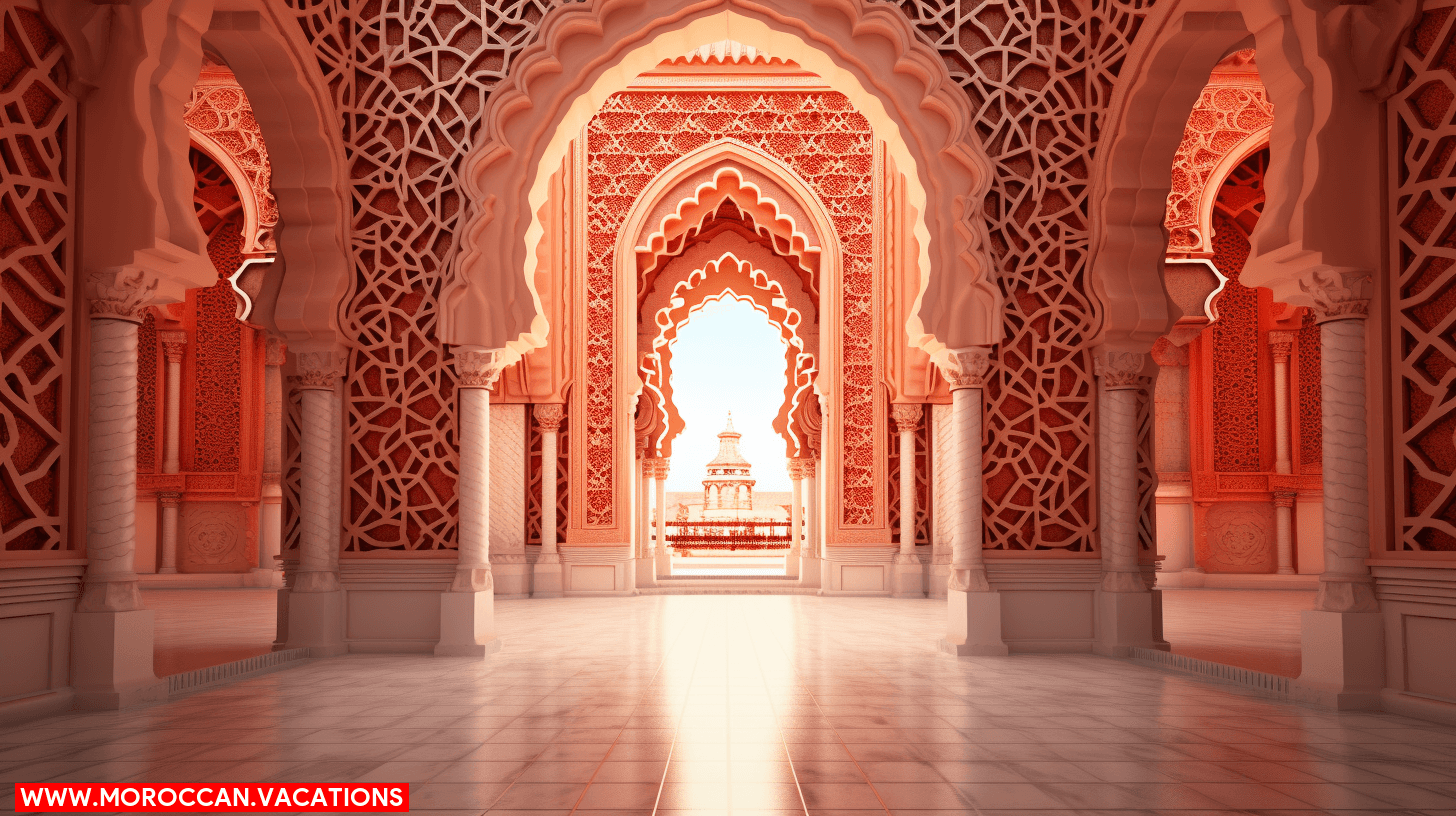

How do contemporary architects in Marrakesh interpret Andalusian architecture in their designs? In Marrakesh, the influence of Andalusian architecture can be seen in the contemporary interpretations and modern adaptations of the style. Architects in Marrakesh have found ways to incorporate the essence of Andalusian architecture while adding their own unique touches. Here are four examples of how Andalusian architecture has been interpreted in contemporary designs:
- Courtyard Spaces: Contemporary architects in Marrakesh often include central courtyards in their designs, reminiscent of the traditional Andalusian courtyards. These courtyards serve as open and welcoming spaces, allowing natural light to filter in and creating a sense of tranquility.
- Geometric Patterns: The use of intricate geometric patterns is another common feature in contemporary interpretations of Andalusian architecture. These patterns can be found in tiles, plasterwork, and woodwork, adding a sense of depth and visual interest to the design.
- Archways and Columns: Arches and columns are prominent elements in Andalusian architecture, and contemporary architects in Marrakesh often incorporate them in their designs. These architectural elements not only provide structural support but also add a touch of elegance and grandeur to the spaces.
- Ornate Detailing: The attention to detail is a hallmark of Andalusian architecture, and contemporary interpretations in Marrakesh embrace this aspect. From intricate carvings to decorative motifs, the ornate detailing adds a sense of richness and beauty to the designs.
Introducing Ayoub Karbachi, a brilliant wordsmith and curator of the Moroccan Vacations website. Prepare to immerse yourself in mesmerizing narratives and extraordinary moments, as he unveils the allure of Morocco's captivating destinations like never before.
Related Articles
The Intersection of Tradition and Modernity: Marrakesh's Art Scene
The Rich Heritage of Marrakesh's Art Step into the vibrant world of Marrakesh's art scene, where tradition and modernity collide in a captivating dance. Here, ancient crafts intertwine with contemporary artistry, creating a tapestry of creativity that will leave you...
Marrakesh's Art Workshops: A Hands-On Experience of Creativity
Exploring Marrakesh's Artistic Heritage Are you ready to unleash your creative potential? Look no further than Marrakesh's art workshops, where you can immerse yourself in a vibrant culture and learn new techniques and mediums. These hands-on experiences will allow...
The Symbolism in Marrakesh's Architectural Details
Uncover the rich symbolism woven into Marrakesh’s architectural details. From intricate tilework to ornate carvings, explore the cultural significance behind the city’s stunning landmarks. Embark on a journey of discovery through Marrakesh’s hidden meanings and timeless beauty.

